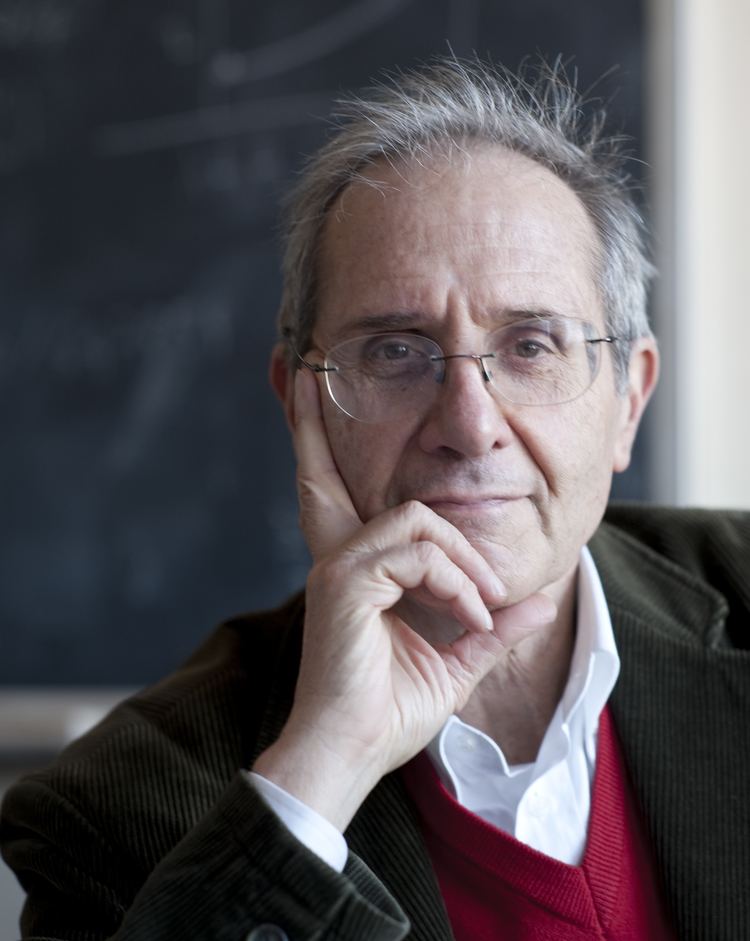Nationality Italian Name Riccardo Barbieri | Fields Theoretical physics | |
 | ||
Institution Scuola Normale Superiore di Pisa Books Lectures on the ElectroWeak Interactions | ||
The Standard Model and some of its extensions - lecturer: Riccardo Barbieri - 2017
Riccardo Barbieri (born 1944) is an Italian theoretical physicist and a professor at the Scuola Normale Superiore di Pisa. He has written more than two hundred research papers in the field of theoretical elementary particle physics, and has been particularly influential in physics beyond the Standard Model.
Contents
- The Standard Model and some of its extensions lecturer Riccardo Barbieri 2017
- Riccardo barbieri closing conference 20 december 2013
- Research career
- Mentoring
- Famous quotes
- Awards and Honors
- Books
- References
Riccardo barbieri closing conference 20 december 2013
Research career
Riccardo Barbieri received his undergraduate education in 1963-67 at the Scuola Normale Superiore in Pisa and at the University of Pisa. His laurea advisor was Pietro Menotti. During his Ph.D. (perfezionamento) in 1967-69 at the Scuola Normale Superiore and in later years he worked on higher-order radiative corrections in Quantum Electrodynamics with Ettore Remiddi. In the 1970s he turned to computations in Quantum Chromodynamics, collaborating in particular with Raoul Gatto and Zoltan Kunszt. In 1976 at CERN, he made the prediction, later experimentally verified, of the hadronic widths of the three charmonium P-waves.
In 1980-82, Riccardo Barbieri was a staff member at the CERN Theory Division. The Standard Model of particle physics by then well established, he started focussing on models beyond the Standard Model, in particular supersymmetry. In 1982, he formulated the first realistic model of mediation of supersymmetry breaking via supergravity.
Since 1984 and until now, Riccardo Barbieri has been professor of theoretical physics at Pisa, first at the University of Pisa (1984–97), and then at the Scuola Normale Superiore (1998–present). Some of his most influential results in this period include:
Mentoring
Having taught in Pisa for 30 years, Riccardo Barbieri is acclaimed for creating a numerous and flourishing school of theoretical high energy physics. Among many of his students and postdocs who went on to become professors of theoretical physics in Italy and around the world, are Gian F. Giudice and Michelangelo Mangano (permanent staff members at the CERN), Riccardo Rattazzi (professor at the EPFL), Alessandro Strumia (professor at the University of Pisa), Andrea Romanino (professor at SISSA), Roberto Contino (professor at Scuola Normale Superiore, Pisa), Paolo Creminelli (professor at the ICTP), Michele Papucci (Divisional Fellow at the Berkeley National Laboratory ), Gia Dvali (professor at the LMU Munich), Vyacheslav Rychkov (professor at the UPMC Paris).
Famous quotes
“Elementary particle physics is the quadrant of nature whose laws can be written in a few lines with absolute precision and the greatest empirical adequacy.”
Awards and Honors
Prof. Barbieri was awarded the "Ordine del Cherubino" from the University of Pisa in 1997, the Humboldt Prize and, more recently, the Physics Prize of "Accademia Nazionale dei Lincei" in 2017. He was also a Miller Visiting Professor at the University of California, Berkeley.
Books
Barbieri, R. (2007). Lectures on the Electroweak Interactions, Publications of the Scuola Normale Superiore, Vol. 5
